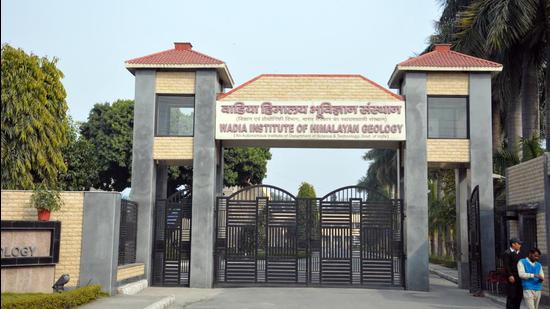Wadia institute to explore hydrocarbons, study seismic threats in Indian Himalayas
Director, WIHG, Kalachand Sain, who is leading the project, informed that the project will help in a “comprehensive study of the surface and sub-surface areas of the Himalayas.”
Dehradun-based Wadia Institute of Himalayan Geology (WIHG) is carrying a six-year project named Characterisation and Assessment of surface and sub-surface Processes in the Himalayas (CAP-Himalayas) to study the various aspects of the Himalayas including exploration of hydrocarbons and seismic threats.

The project was started in 2020 and will conclude in 2025. It comprises all 55 scientists of the premier institute involved in various studies under the project in various groups depending on the “gravity” of the study they are involved in.
Study of surface and sub-surface Himalayan areas
Director, WIHG, Kalachand Sain, who is leading the project, informed that the project will help in a “comprehensive study of the surface and sub-surface areas of the Himalayas.”
“The project will comprise the Indian Himalayas which covers Jammu and Kashmir, Ladakh, Uttrakhand, Himachal Pradesh in the north-western Himalayas and Sikkim, Arunachal Pradesh in the north-eastern Himalayas. It is not possible to cover complete areas of the Indian Himalayas, hence we would undertake the study through various stations set up in these states,” said Sain.
Sain added, “The scientists will study the surface as well as sub-surface areas of the Himalayas under which the team of scientists will analyse the seismic activities underneath causing earthquakes. The scientists will also study other hazards like landslides and glacial lake outbursts on the surface areas which cause a significant amount of damage to life and property.”
Analysing the “one big” possible earthquake in the Himalayas
Emphasising the importance of the studies under the six-year project, Sain informed about the possible ‘one big’ earthquake in the Himalayas comprising both Garhwal and Kumaon regions.
“In the sub-surface of the Himalayas, the tectonic plates are moving due to which huge amount of energy is being accumulated. However, this energy is unable to get released resulting in the locking of pressure. It is feared that this energy will one day fully get released causing a huge earthquake which has not happened in the last about 600 years in this region comprising Garhwal and Kumaon,” Sain said.
“The study will help us understand whether the possible big earthquake will happen or not and what are the other geological processes going on in the sub-surface as the areas where the energy is getting accumulated is about 80-100km in Garhwal and Kumaon. The study will also help in analyse the situation wherein the locked energy is released and in what quantity will it be released and other factors related to it,” said Sain.
Exploring hydrocarbons and minerals
The senior scientist also informed that apart from the study to understand the seismic threats, the scientists will also conduct a study for the exploration of hydrocarbons and minerals in the Himalayas.
“One of the major aspects of the project is the exploration of hydrocarbons, minerals or other important natural resources which will help in the country’s development. One group of scientists is involved for the same. They will not only tell whether there is any hydrocarbon available or not but will also inform about its amount. Based on that, other agencies involved in extraction will then work for it,” said Sain.
Mitigation of hazards in Uttarakhand Himalayas
One of the important aspects of the undergoing project is to identify the regions vulnerable and susceptible to hazards in the Himalayas like earthquake, landslides and glacial lake outbursts.
“This will help in mitigation of natural disasters and minimise the loss of life and property. When we will be aware of the most vulnerable areas to earthquakes or landslides, then we will be able to take the necessary steps to limit the damage. We would then also be able to suggest the building techniques needed to be implemented in those areas so that they could stand to a certain extent in case of an earthquake or landslide, giving time to people to reach a safe place,” said a senior scientist involved in the project.
The senior scientist also informed that the extensive project will also cover the study of the biodiversity present millions of years ago in the Himalayas.
“This would be done by analysing the sediments and fossils found on the surface of the Himalayas. This will also help in studying the climate and temperature during that period supporting the organisms living there,” said the scientist.
Sain, while terming all the above-mentioned aspects as very important, said, “The ultimate goal of the project is to have secured living and meet the societal requirements of the population living in the Himalayas.”




